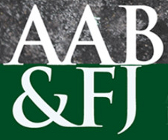Abstract
This paper analyses the impact of export’s intensity on capital structure choices of 647 Portuguese firms of the mold industry, for the period 2010-2017. Not only exports intensity variables are considered, but also variables to deal with firm specific characteristics and macroeconomic factors to fulfill the paper’s aim. Four alternative proxies of capital structure are used: total, long-term, short-term debt and bank loans. Analyzing an unbalanced sample of 4225 observations, using a panel data methodology and estimating the models with fixed effects for firms, the findings of the study reveal that the reliable determinants for leverage are asset structure, growth opportunities, non-debt tax shields, liquidity, risk, size, age and macroeconomic factors. Export’s intensity is only relevant to explain debt through bank loans, while export’s intensity to countries outside Europe is relevant to explain both total and short-term debt. The main results are consistent with the pecking order theory which propose a hierarchy of funds. The trade-off theory is also relevant. Finally, this study shows that firms from the mold industry are more indebted than other Portuguese firms (in mean), and short-term debt is more relevant in the total leverage of the firm.
How to Cite:
Lisboa, I., (2019) “Capital Structure Choices and Exports: the Case of the Portuguese Mold Industry”, Australasian Accounting, Business and Finance Journal 13(4), 23-45. doi: https://doi.org/10.14453/aabfj.v13i4.3
Downloads:
Download PDF
401 Views
979 Downloads

